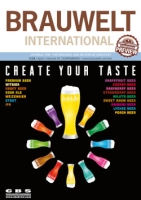Brewing microbiologically perfect beer is every brewery’s aspiration. Therefore, fast, safe and easy methods are needed for quality assurance, particularly for trace detection of beer spoiling bacteria. Enrichment in Döhler’s new, ready-to-use NBB®-PCR Broth in combination with a PCR system offers an ideal solution.
In Scandinavian countries, promotion and retailing of alcoholic beverages has traditionally been regulated by strict laws. In Finland, only alcoholic products with an alcohol content equal to or below 4.7 percent can be sold in supermarkets. An exact determination of alcohol is therefore required, and also of great importance for craft brewers. This generates a need for affordable, yet reliable and very accurate instrumentation.
Whether in politics, economics or society: sustainability is doing the rounds everywhere. Meantime, it has also got as far as agriculture. It has been found that agricultural products that serve an international market increasingly have to furnish evidence of a sustainable mode of production. The brewing sector, in Europe in particular Heineken, has committed itself to significantly raise sustainability of production. Many brewers are making great efforts to optimise sustainability in all areas.
Although beer is regarded as a microbiologically stable beverage, several species of microorganisms spoil beer. Among them, lactic acid bacteria (LAB) are predominant accounting for about 90% of microbiological incidents in the brewing industry. The following article describes recent progress in detection and identification methods for beer-spoilage LAB.
In a study lasting more than a year, experts from SABMiller compared the Sitrans LR250 HEA radar level transmitter prototype – commercially available since September 2014 – against similar systems from other manufacturers and subjected them to thorough testing. As a result, the new transmitter satisfies the stringent requirements of EHEDG aseptic and has been accepted as part of the SABMiller standard for radar level measurement for brewing internationally.
The International Hop Standards Committee (IHSC) announces the release of a new calibration standard, ICS-H2, for the HPLC analysis of hexahydroiso-α-acids.
The complex mechanisms, which occur as beer ages, continue to present brewing scientists with many avenues of research. Applying the abundant laboratory results now available as guidelines or as quantities for judging flavor stability in a brewery’s quality assurance program is however no easy task. Previously published, practically formulated, relatively simple methods are described below, which allow reliable predictions to be made regarding flavor stability and do not require costly equipment. Part 1 appeared in BRAUWELT International no. 5, 2015, pp. 327 - 330 and discussed to what extent flavor stability can be predicted.
Viruses and, in particular, viroids can significantly reduce hop quality and yield, thus causing commercial losses. The pathogens cannot be combatted by plant protection products and can be spread very rapidly during cultivation work. First infestations have to be detected quickly and snuffed out, especially if new pathogens such as the hop stunt viroid and the citrus viroid IV are involved. Since 2008, the Bavarian State Institute of Agriculture (LfL), Freising, has initiated monitoring for the stunt viroid, important viruses were added later, and testing also included the “new” citrus viroid IV.
This article demonstrates how broadly based the technology for producing ionised air is and what applications are possible. It is pointed out that publications on this topic consistently differ in terms of ion concentration or descriptions of methods used to generate ionised air when it comes to values for field strength, radiation etc.
In particular during pasteurisation, sensitive beverages have to be handled with care. A new testing method involving a chemical indicator system has been developed that can be used for determining the actual thermal exposure without having to resort to the classic challenge test with microorganisms.
Quality control processes in breweries are torn between the conflicting priorities of consumer demands for impeccable and high-quality products, the requirements laid down by regulatory authorities and institutions, compliance with hygiene standards, and the brewery’s own economic interests. Therefore, it is very important to select the “right” method for quality control. With TransFast®, Doehler GmbH from Darmstadt, Germany has come up with an innovative solution.
Current issue
Most Read
BRAUWELT on tour
Current issue
Most Read
BRAUWELT on tour
-
Hopsteiner
Optimization of kettle hopping prior to dealcoholization
-
Hopsteiner
Excellent digital Service: the Hopsteiner Customer Portal
-
Hopsteiner
Variations in hop aroma depending on crop year
-
Hopsteiner
Playing with tradition: Hopsteiner Hopoils - Type Hoptanical
-
Hopsteiner
Crop and market update & hop crop 2023 estimate

